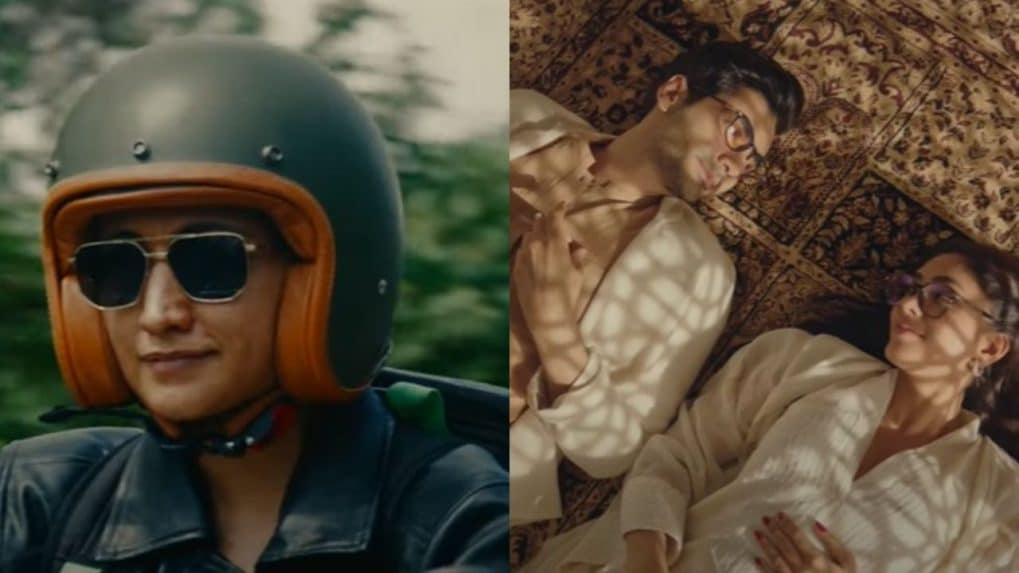Eye Candy: Eyewear brands in India look at atheistic advertising
Much like sneakers, watches or clothes, eyewear brands are now amping up the glamour quotient with better products and marketing strategies.
ADVERTISEMENT
Picture this video. Sunlight peeking through intricately carved wooden latticework. Kashmiri carpets. A couple soaking in the soft light and the love. Cut to another vidoeo. A woman immortalising a pet through a tattoo. Two friends enjoying a divorce party. A man crying at the beach. These two ad films have one thing in common. They both feature ultra-fashionable eyewear.
Recently, homegrown eyewear brand Lenskart launched an ad film to promote its latest collection ‘Gulmarg,’ featuring actors Mrunal Thakur and Ishwak Singh. The film transports viewers to Kashmir, and is inspired by the state’s Pinjrakari artwork. The film caught the attention of many social media users, who found it a refreshing change compared to the usual ads in the category.
Watch the film here:
Another ad film that is making the social media rounds is from D2C eyewear brand John Jacobs, made by the creative agency Talented. The brand has been only promoting work collections, limited celebrity editions, and season curations.
Pooja Manek, creative and founding member, Talented, tells Storyboard18 that they decided not to make "just another fashion film.’’
“While thinking of the concept, we delved deeper into a primal human need — seeing and being seen. That transcends age, gender, and everything else. It’s so universal, we knew this was a fertile space for building a brand,” she explains. The film titled ‘Stay Seen’ is directed by Bosco Bhandarkar and produced by Puff Productions.
Watch the ad here:
A new vision in the category
According to a report by Statista, the revenue generated by the Indian eyewear market in 2023 is estimated to be $5.58 bn, and it is anticipated to grow by 8.17 percent per annum till 2027. While Lenskart is seen as the OG D2C eyewear startup, in the past couple of years, the likes of John Jabobs, CoolWinks, Specsmakers, EyeMyEye, ClearDekho, and others, have opened up the category. While these digital-first startups have omnichannel operations, traditional players such as Titan Eye Plus, GKB Opticals, Reliance-backed Vision Express, Himalaya Opticals, etc., are eyeing offline expansion. The opportunity is ample, observe brand experts.
Devaiah Bopanna, co-founder of content studio Moonshot, feels everything comes down to higher disposable incomes. “Earlier, we wanted functional pieces that weren't heavy on the pocket. Now, we don't mind spending more on creating an identity for ourselves that'll differentiate us from the rest. Eyewear is something you literally wear on your face. It’s like sneakers, watches, or clothes. People are not looking at it just from a functional point of view anymore,” he observes.
Which is why the ads are reflecting that shift in consumer preference. “These ads are more than just the glasses or collection, they push a certain lifestyle,” says Bopanna.
Manek has similar views. She says eyewear as a category is now amping up the glamour quotient, and aims to equal the likes of handbags or shoes as a fashion accessory rather than being just a solution for vision correction.
“You now look at shades and glasses as things to ‘complete’ your look, and not just give you better vision. So, for a D2C brand such as John Jacobs, it has been pivotal to market it beyond just ‘range and features.’ Fashion is an emotion-led category. Ergo, it’s important to make people ‘buy into you’ before they buy you,” she concludes.


